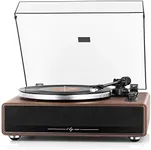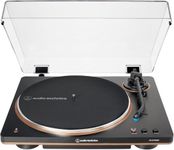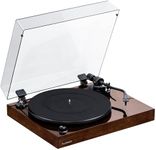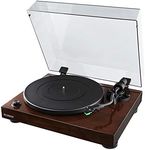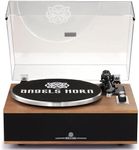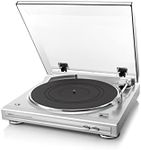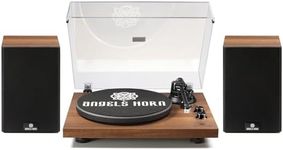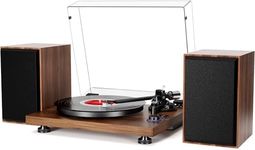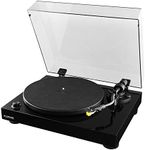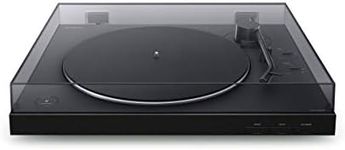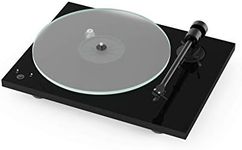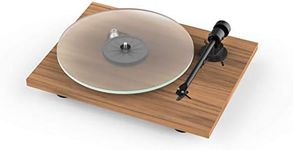Buying Guide for the Best Turntable With Built In Preamp
Choosing the right turntable with a built-in preamp can greatly enhance your vinyl listening experience. A turntable with a built-in preamp simplifies the setup process, as it eliminates the need for an external preamp. This makes it easier to connect your turntable directly to speakers or an amplifier. When selecting a turntable, consider the following key specifications to ensure you find the best fit for your needs.Built-in PreampA built-in preamp amplifies the signal from the turntable to a level that can be processed by speakers or an amplifier. This is important because it simplifies the setup process and reduces the number of components you need. If you are new to vinyl or prefer a straightforward setup, a turntable with a built-in preamp is a great choice. For those who want more control over their sound, an external preamp might be preferred, but this requires additional equipment and setup.
Drive TypeTurntables come with either belt-drive or direct-drive systems. Belt-drive turntables use an elastic belt to spin the platter, which can reduce motor noise and vibration, making them ideal for home listening. Direct-drive turntables have the motor directly connected to the platter, providing more consistent speed and durability, which is preferred by DJs and those who need to frequently start and stop the platter. Choose a belt-drive for high-fidelity listening and a direct-drive if you need robust performance and quick start/stop capabilities.
Speed SettingsTurntables typically offer two speed settings: 33 1/3 RPM and 45 RPM, which correspond to the most common vinyl record formats. Some turntables also support 78 RPM for older records. It's important to choose a turntable that supports the speeds of the records you plan to play. If you have a diverse collection, ensure your turntable can accommodate all necessary speeds.
Cartridge and StylusThe cartridge and stylus are critical components that affect sound quality. The cartridge holds the stylus, which reads the grooves of the record. There are moving magnet (MM) and moving coil (MC) cartridges, with MM being more common and easier to replace. MC cartridges can offer higher fidelity but are more expensive and less common. Consider your listening preferences and how much you are willing to invest in replacement parts when choosing a cartridge type.
Build QualityThe build quality of a turntable affects its durability and sound performance. Look for a solid, heavy base to minimize vibrations and a well-constructed tonearm for accurate tracking. Materials like aluminum and high-quality plastics are common in good turntables. If you plan to use your turntable frequently, investing in a model with robust build quality will ensure longevity and consistent performance.
Connectivity OptionsConsider the connectivity options available on the turntable. Most turntables with built-in preamps will have RCA outputs to connect to speakers or an amplifier. Some modern turntables also offer USB outputs for digitizing vinyl records and Bluetooth connectivity for wireless playback. Think about how you plan to use your turntable and choose one with the appropriate connectivity options for your setup.
User Interface and ControlsThe user interface and controls of a turntable can affect your overall experience. Look for features like automatic start/stop, which can protect your records and stylus, and pitch control, which allows you to adjust the playback speed. Simpler controls are better for beginners, while more advanced users might appreciate additional features for fine-tuning their listening experience. Choose a turntable with controls that match your level of expertise and how hands-on you want to be with your vinyl playback.
